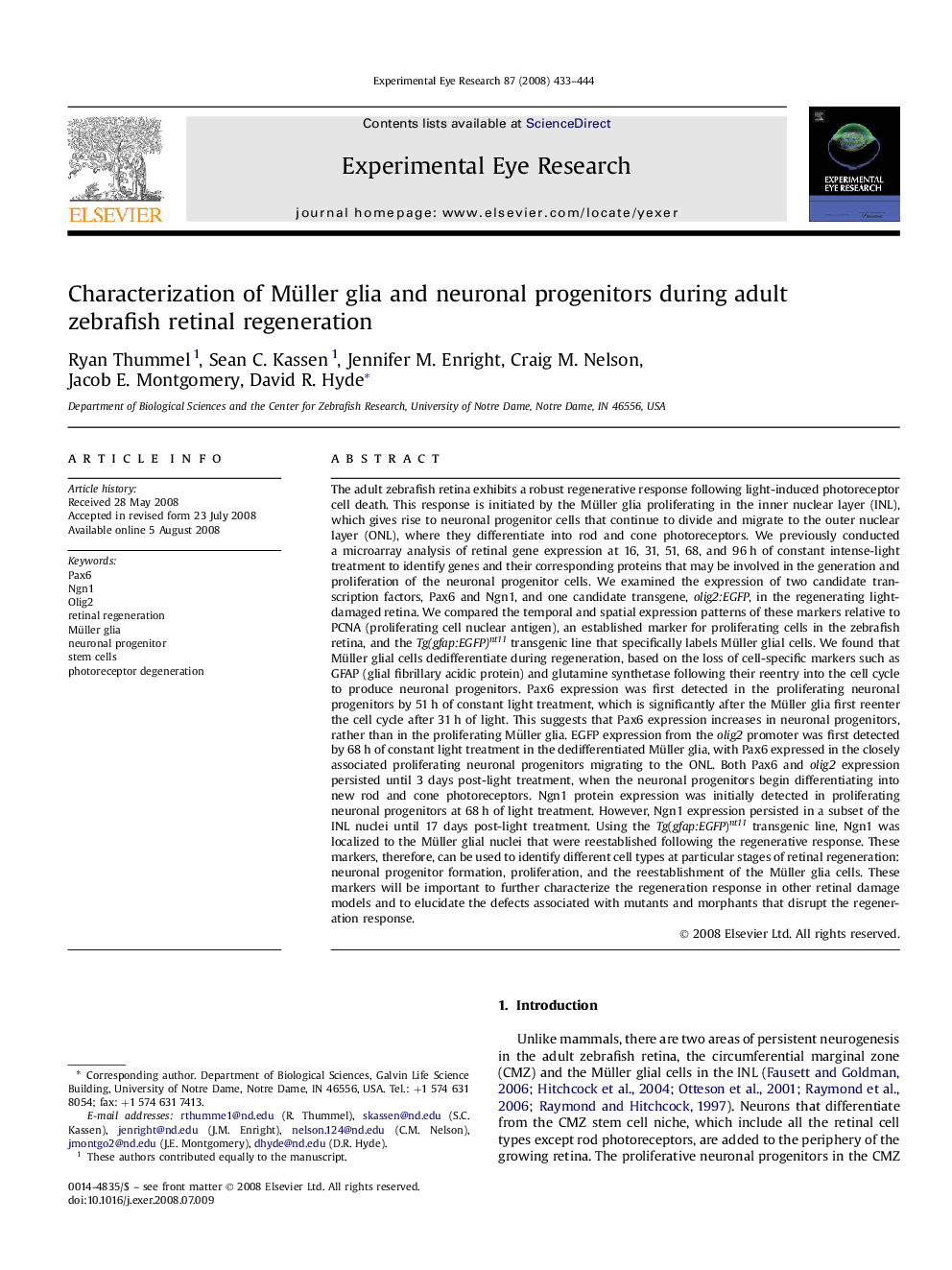| کد مقاله | کد نشریه | سال انتشار | مقاله انگلیسی | نسخه تمام متن |
|---|---|---|---|---|
| 4012331 | 1261189 | 2008 | 12 صفحه PDF | دانلود رایگان |

The adult zebrafish retina exhibits a robust regenerative response following light-induced photoreceptor cell death. This response is initiated by the Müller glia proliferating in the inner nuclear layer (INL), which gives rise to neuronal progenitor cells that continue to divide and migrate to the outer nuclear layer (ONL), where they differentiate into rod and cone photoreceptors. We previously conducted a microarray analysis of retinal gene expression at 16, 31, 51, 68, and 96 h of constant intense-light treatment to identify genes and their corresponding proteins that may be involved in the generation and proliferation of the neuronal progenitor cells. We examined the expression of two candidate transcription factors, Pax6 and Ngn1, and one candidate transgene, olig2:EGFP, in the regenerating light-damaged retina. We compared the temporal and spatial expression patterns of these markers relative to PCNA (proliferating cell nuclear antigen), an established marker for proliferating cells in the zebrafish retina, and the Tg(gfap:EGFP)nt11 transgenic line that specifically labels Müller glial cells. We found that Müller glial cells dedifferentiate during regeneration, based on the loss of cell-specific markers such as GFAP (glial fibrillary acidic protein) and glutamine synthetase following their reentry into the cell cycle to produce neuronal progenitors. Pax6 expression was first detected in the proliferating neuronal progenitors by 51 h of constant light treatment, which is significantly after the Müller glia first reenter the cell cycle after 31 h of light. This suggests that Pax6 expression increases in neuronal progenitors, rather than in the proliferating Müller glia. EGFP expression from the olig2 promoter was first detected by 68 h of constant light treatment in the dedifferentiated Müller glia, with Pax6 expressed in the closely associated proliferating neuronal progenitors migrating to the ONL. Both Pax6 and olig2 expression persisted until 3 days post-light treatment, when the neuronal progenitors begin differentiating into new rod and cone photoreceptors. Ngn1 protein expression was initially detected in proliferating neuronal progenitors at 68 h of light treatment. However, Ngn1 expression persisted in a subset of the INL nuclei until 17 days post-light treatment. Using the Tg(gfap:EGFP)nt11 transgenic line, Ngn1 was localized to the Müller glial nuclei that were reestablished following the regenerative response. These markers, therefore, can be used to identify different cell types at particular stages of retinal regeneration: neuronal progenitor formation, proliferation, and the reestablishment of the Müller glia cells. These markers will be important to further characterize the regeneration response in other retinal damage models and to elucidate the defects associated with mutants and morphants that disrupt the regeneration response.
Journal: Experimental Eye Research - Volume 87, Issue 5, November 2008, Pages 433–444